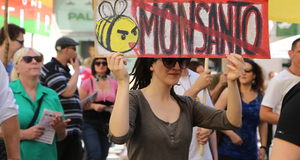Featured Article:The CRISPR Fantasy: Flaws in Current Metaphors of Gene-Modifying Technology
By
2016, Vol. 8 No. 06 | pg. 2/2 | « Contextualizing The Brave New World of Genetic ModificationThere is one aspect of Ben Merriman’s oppositional argument that partially rings true, though. In the near future, CRISPR technology will “dramatically expand the practical power of genetic science,” inevitably reaching precision levels where editing the genetic code is nearly literal terminology (2015, p. 63). This assumption is valid: Within the past year, modifications to the Cas9 scissor protein have reduced off-target errors below detectable levels for a majority of tested target sequences (Kleinstiver et al., 2016). Merriman uses this fact to dismiss O’Keefe and colleagues’ arguments about editing as trivial and short-sighted. However, this is a rash conclusion. While CRISPR may soon become as reliable as a text editor, experiments are still conducted in the present. As Nordgren (2001) asserts, metaphors “should not go beyond what is scientifically established at the time” (p. 110). Stanford University’s gene therapist Mark Kay concurs, remarking that “Whenever there’s a new technology, there’s a huge amount of excitement and everybody thinks it will be ready tomorrow to cure patients…[but] it’s going to take some time” (Kaiser, 2016, n.p). In the words of Science Magazine, the CRISPR of today is still being troubleshot: “The Cas9 enzyme that CRISPR uses to cleave DNA…could also make cuts where it’s not intended to, potentially causing cancer” (Kaiser, para 5) Also, once CRISPR is in the body, it stays in the body. Thus, it is imperative that a long-term technology is as reliable as its terminology implies. The dilemma of properly representing control contextually straddles present and future. It is clear that the current metaphors have flaws. As seen in the prior paragraph, it is also clear that metaphorical veracity is time-dependent. The fantasy of one day becomes the truth of the next. The question then arises: Why should we modify the current system in the face of imminent change? The answer is simple. In discussion, both public and scientific, there are “dialogic responsibilities” (Blasimme et al., 2015, p. 55). Invoking “Habermas’s theory of communicative actions,” Blasimme et al. describes how “discussants have dialectic obligations to engage with objections and counterarguments,” and the currently skewed metaphors can silence the negative aspects of technology (p. 55). Habermas, a renowned sociologist and philosopher, believed effective rational discourse is impeded by biased linguistic expression (Szczelkun, 1999).Editing and targeting, while not maliciously intended, implicitly present a one-sided perspective. In Habermas’s eyes, this metaphorical constraint limits effective communication between scientists and the public. This presents an issue because mutual understanding is a “moral responsibility in genetics” (Nordgren, 2001, p. 110). Hence, I justify the development of a more holistic terminology with linguistic bioethics. In the words of Pauwels, a synthetic biology analyst, “describing genetic systems as though they are electrical ones (whereby genes are switched on and off) works to a degree, but unlike switching on a light…the activation of a particular gene depends on numerous parameters” (2013, p. 524). Such reckless discourse “sends a message to policy-makers and laypeople that scientists can already make biological systems that are reliable and controllable…it widens rather than closes the gap between scientific realities and expectations” (Pauwels, p. 524). Pauwels’s ideas connect with an important concept: The trickle-up effect. Metaphors affect public perception, and public perception affects public policy. They say that to speak to a man, one must speak to the stomach. Agriculture provides a great example of public policy dysfunction resulting from CRISPR terminology. The American law-bodies put great thought into labeling our dietary fuel. Under USDA rules, “getting genetically modified crops approved for use is so complex and expensive that most of those that have been modified are large commodity crops such as maize” (Ledford, 2015, p. 22). However, based on popular portrayal, CRISPR-modified foods may be able to bypass these restrictions. As Claire Ainsworth describes in Nature (2015), the idea of selective genome editing, removing and inserting small segments with “both subtlety and speed,” is considered less risky than the “typically ham-fisted” idea of “inserting a large section of DNA from an entirely different kind of organism” (p. 15). Therefore, due to the precision of CRISPR—bolstered with the metaphorical implications of machinated editing—its modifications are treated differently than traditional GMOs. At face value, this makes sense to me. Logically, deleting a few inconvenient genes in a tomato seems safer than inserting the genes of a fish. However, one must realize any genetic deviation has potential for error: Slippage in just a few nucleotides can have drastic repercussions. In humans, it could cause cancer. In a plant, it could cause chemical changes. Regardless of GMO benefits, I find it nonsensical to gift CRISPR critters special treatment. And yet, that exact process is happening. A white button mushroom genetically modified to “resist browning” by “deleting just a handful of base pairs” has become the first “CRISPR-edited organism to receive a green light,” bypassing the USDA’s regulatory process (Waltz, 2016, p. 293). These “crisp-er” mushrooms avoided guidelines through a technological technicality by adopting the literary frame of a simple edit instead of a foreign introduction. This same evasion may occur with other agricultural commodities such as pigs whose immune-system genes have been edited to tolerate African swine flu (Ainsworth, 2015). As CRISPR agricultural progresses, this linguistic loop-holing will continue to violate Nordgren’s communicative “moral responsibility” (2001, p. 110). While I recognize the undebatable benefits of some CRISPR-edited foods, they still need to be comprehensively legislated. Luckily, regulation committees are talking: “The United States are revamping its rules for regulating GMOs…the Coordinated Framework for Regulation of Biotechnology” (Waltz, 2016, p. 293). In agriculture and other fields, guidelines are being reframed for the future. Until then, however, CRISPR marches through uncharted lands. The very reason for instituting regulatory guidelines is the reason for CRISPR’s metaphorical flaws: Technological imperfection. If biotechnology was perfect, crops and humans could be modified, could be edited, without worry. Repercussions don’t exist if mistakes never occur. Ultimate precision would be justifiable. However, we live in reality: Genomic editing always has the potential for undesirable outcomes, especially with unrealistic expectations of human control. For example, Ethan Bier of UC Davis designed a “gene drive system” to spread a genetic modification through a population of flies without “devising a method to reverse the engineered change;” a postdoc presented work in 2014 about a “virus [that] was engineered to carry CRISPR components into mice” but “a minor mistake in the design of the guide RNA could result in a CRISPR that worked in human lungs as well” (Ledford, 2015, p. 21). Yes, both experiments were procedurally isolated in lab, but both were also conducted under relatively loose societal restrictions. I trace part of this laxness to vocabulary complications. As Charo and Greely detail in their 2015 article, “CRISPR Critters and CRISPR Cracks,” CRISPR’s capabilities have exceeded the capacity of regulatory descriptions. In a general example, under the FDA, a relatively prehistoric 1994 rule for cattle medicines was used to define the “genetic construct used to engineer the mosquito” to fight diseases as “an ‘animal drug,’” (Charo and Greely, 2015, p. 14). The issue was passed among departments for years until it finally was assigned to a coalition between the FDA, CDC, EPA, and USDA, by which time, “Oxitec [the genetic engineering company] had begun trials in South America” (Charo and Greely, p. 15). This summarizes a common fear: “Science is moving in lightning speed, and regulatory changes may happen after a high-profile gene-drive [a CRISPR technology] release” (Ledford, 2015, p. 24). With this precarious backdrop in mind, effective metaphorical descriptions—necessary to revamp regulations for the neck-breaking CRISPR advancements—are in dire need. The problem is established, and the theoretical and policy-based context is defined. The road is cleared for progress. Collaboratively Troubleshooting for CRISPR VocabulariesI will not bluntly suggest an improved metaphor. Such a presumptuous action would go against my proposition for the revision process. I argue that while bioethicists, linguists, and the public should have the ability to critique metaphors, scientists deserve the power to evaluate the descriptions used and update them. With this right, however, these scientists have the responsibility to constantly reevaluate words for accuracy. This system splits the current ideological dichotomy surrounding bioethics-based regulation. On one hand, there are scientists saying that these arguments are stalling progress, impeding life-saving techniques (Kuzma, 2016). Some prominent linguists agree: Pinker, deriding attempts of bioethicists to stunt CRISPR’s advancement with word-woven red tape, argues that “a truly ethical bioethics should not bog [things] down” (2015, para 7). On the other hand, even “Doudna [CRISPR’s founder] has begun to have more serious concerns about safety” as experiments move towards human germ line editing (Ledford, 2015, p. 21). I find merit in both hands. One need only look at history. As seen with the aforementioned CRISPR mushroom and Oxitec mosquito cases, gridlocked regulatory bureaucracy can halt some genomic experiments while allowing others to slip through. Still, jumping through some hoops and pushing aside others is all fun and games until somebody gets hurt. Ledford (2015) recalls University of Philadelphia’s “booming enthusiasm over gene therapy in the 1990s” and “its downfall when a clinical trial went wrong and killed a young man” (p. 24). If such a mistake occurred with CRISPR without proper oversight, I predict the resulting irrational alarm may cause research to be halted altogether. Indeed, a bioethics group in Nature has already preemptively “suggest[ed] a moratorium on research where human germ cells are edited for fear of where it might lead…the backlash [could] harm work to develop genome-editing therapy” (Corbyn, 2015, para 13). My proposition to walk the road between scientists and bioethicists helps bridge the dichotomy. Critical discourse lays ground for symbiotic understanding. According to the previously discussed Habermas Theory of Communicative Action, all parties should critique literature for flaws to facilitate clear, mutually beneficial discussion. Meghan O’Keefe, the instigator of the CRISPR metaphor conversation, is a Religious Studies professor at UC Davis. Nelken and colleagues are Rhetorical Theorists at Northwestern University. Ben Merriman is a Sociologist from the University of Chicago. Though these authors are not strict biological researchers, their skills in applied discourse analysis enable them to point out literary bias in scientific publications. Even the public takes notice of unwarranted logorrhea—this is a #crisprfact. But why are scientists drawn to skewed metaphors in the first place? Nordgren argues that “geneticists are ‘selling’ their scientific enterprise…to get more funding” (2001, p. 109). Pauwels takes a more forgiving viewpoint that “in their excitement at making a discovery, [they] believe that they can predict and control outcomes in complex” systems (2013, p. 524). To enthused scientists, including myself, current metaphors may seem near-truth. This is especially true with CRISPR. Katherine Bosley, chief executive of gene therapy company Editas, says that “usually the hard part is convincing others that an approach will work…with CRISPR it’s almost the opposite…there’s so much excitement and support, but we have to be realistic” (Ledford, 2015, p. 22). Thus, I conclude that linguists can help scientists realize semi-consciously implemented biases. Then, the scientists who have the best understanding of the technical material, and therefore the right to inform “policy makers, civil society, and the media” of “potentially divisive technologies,” can engage in reevaluating discussion and create change (Blasimme et al., 2015, p. 55). Leading experts in stem-cell research that met in Paris April 2016 reached a similar conclusion: “There is no common understanding of ‘enhancement’ and no consensus that editing to achieve it should be permitted” and “public discussion of gene editing technology is urgently needed and ‘broad informed consent’ from the public is necessary” (Cook, 2016, para 9 and para 13). I assert that the public has a right to view technology from a perspective both preferred by cutting-edge scientists and approved upon by leading bioethicists. To do so requires a carefully curated vocabulary. This process, innervating research-oriented minds with linguistics, has already occurred multiple times in the past. History speaks. In modern life, DNA is seldom referred to a Book of Life. Even blueprint is a relative rarity. As Nelkin explains in 2001, as more is known about genetic roles in cellular microenvironments, myths are dispelled along with their accompanying metaphors. In my biology courses, genomes are not blueprints or Holy Grails—while genetic makeups favor certain traits, they are far from soothsayers. The environment matters, and as we grow, our genomes mutate. Our terminology evolves with understanding. Still, I see traces of outmoded blueprints in modern genetic code. Code, albeit humanly editable, still statically defines a system’s functions. Though there are improvements from the original deterministic Book of Life, modern terminology undeniably contains errors. Like the past, terminological evolution is needed. Unlike the past, though, biotechnology has been breaking through barriers much faster than scientific writers can feasibly adapt to without guidance. Yes, there are popular instances of correction: Molecular biologist Bonnie Baker of Princeton pointed out “the title of Venter and colleagues’ 2010 Science paper (‘Creation of a bacterial cell controlled by a chemically synthesized genome’)” is inaccurate because “the authors did not create…they cloned” (Pauwels, 2013, p. 524). However, with every fallacy caught, more slip through widening cracks. Actions towards curbing CRISPR’s metaphorical nightlife has already taken physical form. On May 26, 2016, the UC North Bioethics Collaboratory hosted a convention titled “CRISPR Technology: Responsible Discourse about Science & Bioethics.” Speakers from around the nation, including O’Keefe and Greely, convened with researchers to discuss the current language environment. The brochure advocates “conversations among a broad range of audiences: members of the public, representatives of regulatory bodies, biomedical researchers, clinicians, patients, humanities scholars, and many others” (UC North Bioethics Collaboratory, 2016, para 2). Interdisciplinary discussion fosters awareness among the scientific community. Moreover, larger groups such as the “Science and Technology Innovation Program at the Woodrow Wilson” Center host “experts and non-experts from different disciplines and sectors…to discuss the science and implications of specific technological applications” (2013, Pauwels, p. 524). Defining ethical and effective vocabulary is imperative. These types of “active exchange[s]” will mold the conversational tools for the future of CRISPR (UC North Bioethics Collaboratory, para 2). Creative abstraction extends beyond written discourse, directly shaping how the next generation learns about science. Dr. Drew Endy and Dr. Jan Liphardt’s Intro to Bioengineering course at Stanford University is quite literally, a literalist’s worst nightmare (2016). Assignments consist of pseudo-code and logic flow diagrams. Lectures showcase logic gates and BioBricks. The figurative king marches against the horizon. However, though Dr. Liphardt admits difficulties in differentiating real processes from theoretical fantasy in presented material, this foundational course builds important engineering frameworks through analogy and figurative design. Visions of possible futures build upon O’Keefe et al.’s potential oversimplifications. A cycle of progression continues, new technical advancement needing fresh terminology to describe it. Mankind’s members change the world, but CRISPR’s critters transcend it. Biotechnology’s progress exceeds human comprehension #crisprfacts. This fact warrants action: Through focused critique by social scientists and reassessment by research developers, figurative discourse can evolve alongside technical discovery. ReferencesAinsworth, C. (2015). Agriculture: A new breed of edits. Nature, 528(7580), S15–S16. http://doi.org/10.1038/528S15a Blain, Loz. (2015, November 11). Do-it-yourself CRISPR genome editing kits bring genetic engineering to your kitchen bench [Magazine]. Retrieved May 27, 2016, from http://www.gizmag.com/home-crispr-gene-editing-kit/40362/ Blasimme, A., Anegon, I., Concordet, J.-P. , Vos, J. D., Dubart-Kupperschmitt, A., Fellous, M., … Cambon-Thomsen, A. (2015). Genome Editing and Dialogic Responsibility: “What’s in a Name?” The American Journal of Bioethics, 15(12), 54–57. http://doi.org/10.1080/15265161.2015.1103811 Charo, R. A., & Greely, H. T. (2015). CRISPR Critters and CRISPR Cracks. The American Journal of Bioethics, 15(12), 11–17. http://doi.org/10.1080/15265161.2015.1104138 Cook, Michael. (2015, May 14). BioEdge: Paris conference investigates CRISPR potential. Retrieved May 17, 2016, from http://www.bioedge.org/bioethics/paris-conference-investigates-crispr-potential/11871 Corbyn, Z. (2015, May 10). Crispr: is it a good idea to “upgrade” our DNA? Retrieved May 17, 2016, from http://www.theguardian.com/science/2015/may/10/crispr-genome-editing-dna-upgrade-technology-genetic-disease Cornelissen, J. p. (2002). On the “Organizational Identity” Metaphor. British Journal of Management, 13(3), 259–268. Doudna, J. A., & Charpentier, E. (2014). The new frontier of genome engineering with CRISPR-Cas9. Science, 346(6213), 1258096. http://doi.org/10.1126/science.1258096 Endy, Drew, & Liphardt, Jan. (2016). Lecture 5-Stanford BioE 80 (Engineering living matter; Endy and Liphardt) [Lecture]. Stanford Sririam BIOE Center. Retrieved from https://www.youtube.com/watch?v=k3VsZbxSQxI Harrington, R. (2015, July 22). Twitter Turns Down The CRISPR Hype. Retrieved May 1, 2016, from http://www.popsci.com/twitter-turns-down-crispr-hype Kaiser, J. (2016). The gene editor CRISPR won’t fully fix sick people anytime soon. Here’s why. Science. http://doi.org/10.1126/science.aaf5689 Kleinstiver, B. P. , Pattanayak, V., Prew, M. S., Tsai, S. Q., Nguyen, N. T., Zheng, Z., & Joung, J. K. (2016). High-fidelity CRISPR–Cas9 nucleases with no detectable genome-wide off-target effects. Nature, 529(7587), 490–495. http://doi.org/10.1038/nature16526 Kuzma, J. (2016). Policy: Reboot the debate on genetic engineering. Nature, 531(7593), 165–167. http://doi.org/10.1038/531165a Lakoff, G., & Johnson, M. (1980). Conceptual Metaphor in Everyday Language. The Journal of Philosophy, 77(8), 453–486. http://doi.org/10.2307/2025464 Ledford, H. (2015). CRISPR, the disruptor. Nature, 522(7554), 20–24. http://doi.org/10.1038/522020a Ledford, H. (2016). CRISPR: gene editing is just the beginning. Nature, 531(7593), 156–159. http://doi.org/10.1038/531156a Lumby, J., & English, F. W. (2010). Leadership as Lunacy: And Other Metaphors for Educational Leadership. Corwin Press. Maxmen, A. (2015, July 22). Easy DNA Editing Will Remake the World. Buckle Up. Retrieved May 1, 2016, from http://www.wired.com/2015/07/crispr-dna-editing-2/ Merriman, B. (2015). “Editing”: A Productive Metaphor for Regulating CRISPR. The American Journal of Bioethics, 15(12), 62–64. http://doi.org/10.1080/15265161.2015.1103806 Nelkin, D. (2001). Molecular metaphors: the gene in popular discourse. Nature Reviews Genetics, 2(7), 555–559. http://doi.org/10.1038/35080583 Nelson, S. C., Yu, J.-H., & Ceccarelli, L. (2015). How Metaphors About the Genome Constrain CRISPR Metaphors: Separating the “Text” From Its “Editor.” The American Journal of Bioethics, 15(12), 60–62. http://doi.org/10.1080/15265161.2015.1103815 Nordgren, A. (2001). Responsible Genetics: The Moral Responsibility of Geneticists for the Consequences of Human Genetics Research. Springer Science & Business Media. O’Keefe, M., Perrault, S., Halpern, J., Ikemoto, L., Yarborough, M., & Sciences, U. N. B. C. for L. & H. (2015). “Editing” Genes: A Case Study About How Language Matters in Bioethics. The American Journal of Bioethics, 15(12), 3–10. http://doi.org/10.1080/15265161.2015.1103804 Pauwels, E. (2013). Communication: Mind the metaphor. Nature, 500(7464), 523–524. http://doi.org/10.1038/500523a Pinker, S. (2006, October 8). Block That Metaphor! Retrieved May 29, 2016, from https://newrepublic.com/article/77730/block-metaphor-steven-pinker-whose-freedom-george-lakoff Pinker, S. (2015, August 1). The moral imperative for bioethics - The Boston Globe. Retrieved May 1, 2016, from https://www.bostonglobe.com/opinion/2015/07/31/the-moral-imperative-for-bioethics/JmEkoyzlTAu9oQV76JrK9N/story.html Szczelkun, Stephan. (1999, October). Summary of the Theory of Communicative Action [Journal]. Retrieved May 29, 2016, from https://www.csudh.edu/dearhabermas/publsbm01.htm UC North Bioethics Collaboratory. (2016, May). CRISPR Conference - UC North Bioethics Collaboratory [Event Description]. Retrieved May 24, 2016, from http://www.ucnorthbioethicscollaboratory.org/crispr-conference.html Waltz, E. (2016). Gene-edited CRISPR mushroom escapes US regulation. Nature, 532(7599), 293–293. http://doi.org/10.1038/nature.2016.19754 Zimmer, B. (2016, January 7). “Crispr” Breaks Out Of the Lab. Wall Street Journal. Retrieved from http://www.wsj.com/articles/crispr-breaks-out-of-the-lab-1452181544 Suggested Reading from Inquiries Journal
Inquiries Journal provides undergraduate and graduate students around the world a platform for the wide dissemination of academic work over a range of core disciplines. Representing the work of students from hundreds of institutions around the globe, Inquiries Journal's large database of academic articles is completely free. Learn more | Blog | Submit Latest in Linguistics |


















